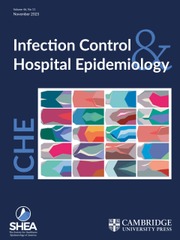No CrossRef data available.
Article contents
Role of EDTA lock solution in preventing catheter-related bloodstream infections or central line-associated bloodstream infections: a systematic review and meta-analysis
Published online by Cambridge University Press: 05 September 2025
Abstract
Catheter-related bloodstream infections (CRBSI) or central line-associated bloodstream infections (CLABSI) occur frequently with long-term indwelling catheters. EDTA (Ethylenediaminetetraacetic acid) and other catheter lock solutions can prevent CRBSI/CLABSI. This study aimed to identify the role of EDTA lock solution in preventing CRBSI/CLABSI compared to the non-EDTA lock solutions.
Eligible studies comparing the effectiveness of EDTA versus a control group on averting CRBSI or CLABSI were identified through searches across PubMed, Embase, Scopus, Cochrane CENTRAL, medRxiv, bioRxiv, and ClinicalTrials.gov. The secondary outcomes were catheter colonization, catheter survival, and catheter thrombosis. The relative risk for all the outcomes was calculated.
This meta-analysis included eight studies (403 EDTA vs 425 control patients) and demonstrated a significant reduction in CRBSI/CLABSI with EDTA (15 vs 71 events; RR: 0.18; 95% CI: 0.10–0.33; P < 0.00001). Catheter colonization also decreased significantly (8 vs 38 events; OR: 0.11; 95% CI: 0.05–0.29). EDTA improved catheter survival in hemodialysis patients (OR: 3.77; 95% CI: 1.23–11.61; P < 0.02) but showed no significant effect on thrombolytic treatment or all-cause mortality. Subgroup analyses supported these findings, with no publication bias detected.
EDTA significantly reduces CRBSI/CLABSI and catheter colonization, improves catheter survival, but does not affect thrombolytic treatment or mortality. Evidence certainty varies across outcomes.
Information
- Type
- Review
- Information
- Copyright
- © The Author(s), 2025. Published by Cambridge University Press on behalf of The Society for Healthcare Epidemiology of America
Footnotes
These two senior authors (AG and SC1) contributed equally.


